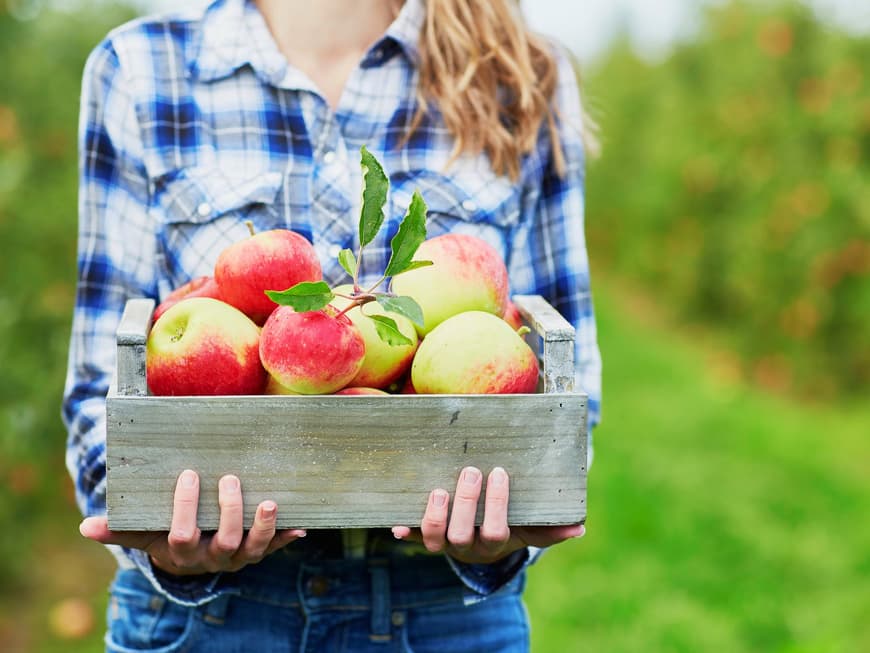
There are around 20,000 varieties of apple worldwide, rich in vitamins, minerals and trace elements. It's just a shame that only a few varieties end up in the shops. It is therefore worth trying out alternatives at weekly markets - or planting a tree yourself in the garden.
Which apple varieties are particularly healthy and rich in vitamins?
On average, an apple has a vitamin C content of 12 milligrams per hundred grams. However, some varieties significantly exceed this value, for example Braeburn with 20 milligrams. Boskoop and Cox Orange contain a particularly high amount of secondary plant substances that prevent cardiovascular diseases. Incidentally, organically grown apples do not have a higher vitamin content. In general, apples should be eaten with the skin on, as most of the vitamins are located directly underneath.
What is the best way to store fruit at home?
Apples ripen very quickly at room temperature. It is therefore better to store them in a cool cellar or, if there is enough space, in the fridge: professional storage keeps apples fresh at just 1 to 2 degrees.
What is the difference between picking and eating ripeness?
If the fruit is easy to pick from the tree, it has reached picking ripeness, but is not automatically suitable for consumption. Many varieties need to be stored for a longer period of time before they can develop their full flavor. Only then are they considered ripe for consumption. Cox oranges, for example, are picked until mid-September, but are only ready to eat from October to November.
What are the new trends you should know about?
Crisp and juicy varieties such as "Junami" and "Kanzi", as well as the mini "Rockit" and the "snack apple", where you can eat the core. For those who like it exotic: the "Baya Marisa" is the first apple with red flesh. Popular on Instagram: Apple sandwiches in which the slices of bread are replaced by apple slices - spread with peanut butter or avocado and topped with all kinds of superfoods. Try them out!
Old varieties:
Alkmene Ripe for picking in September, daughter of cox Orange, from which it has also inherited a lot of flavor. Medium-sized, pleasantly sweet with a little acidity.
Berlepsch Ripe for picking in October, ready to eat from November to February. Flat-round red apple. Firm, sweet-sour aroma, very high in vitamin C.
FinkenwerderHerbstprinz Ripe for picking in mid-October, keeps until January. Formerly the No. 1 in the north. Firm, tart, with a strong, slightly tart aroma.
Gelber Gravensteiner Ripe for picking in September, edible until the end of October. The tastiest of all early apples: large, juicy, sweet with a delicate acidity. Strong aroma.
Goldparmäne Ripe for picking in October, edible until December. A round, golden yellow apple with a red cheek. Flesh with a nutty aroma.
